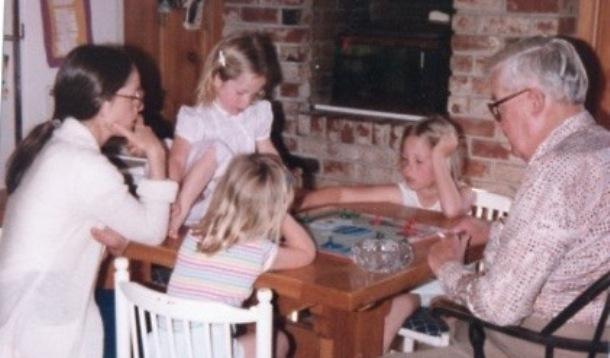
Valentine's Day might be evolving a bit for me. I still want a themed present and treats of course, but this year reflections on my favorite holiday went deeper than my desire for all things sweet, glittery, and fuchsia.
I started thinking about love, gratitude, and of two gentlemen who shaped my life and made me feel, even as a little girl, that I was equal, capable and cherished. Grandpa and Papa were my grandfathers and since I can no longer mail off two glue-covered doily hearts or scribbled Snoopy cards, this is my long overdue Valentine to them.
Before typing too much, I contacted my editor for approval. She responded with this photo:

and the following statement: “I loved my Grandpa so much. He was the nicest man in my life and I think, until I met my partner, the one who loved me the most.”
It appears I am not alone.
I am sure that my grandmothers would agree that my grandfathers were far from perfect. But immortalized in my childhood memories, they were unique, special, and unblemished by the realities of adult relationships.
Although similar in many ways, Grandpa and Papa led very different lives. Grandpa left affluent Oakville behind to become a farmer in the small town of Goderich. Each summer we would visit for two weeks of country life followed by time at the cottage in Georgian Bay. On the farm he taught us how to shoot a .22 rifle, drive a jeep in the fields, and ride a horse. Occasionally after dinner, he would take one of us up for a ride in his open cockpit Tiger Moth biplane. Gender had no benefit to grandchildren vying for these privileges. One needed only to be brave and able to keep up. When following him on horseback through water or a herd of cattle instruction was simple, "Don't be an ass; you’ll scare the horse."
At the cottage he showed us how to clean fish and led expeditions to abandoned islands. A pledge not to “lily-dip” might earn one a canoe ride. Encouraging independence he fixed up a boat for us to drive solo and built a diving board out of wooden planks, rusty barrels and rocks. My cousin recently told me that Grandpa had been a little disappointed in her decision to attend the proximate University of Western Ontario because distant, “Queens would have been more of an adventure.”
Despite delighting us with adrenaline-loaded childhood experiences, Grandpa was careful, loving and never reckless with us. I always felt safe when in his company. In turn I wanted him to think of me as strong.
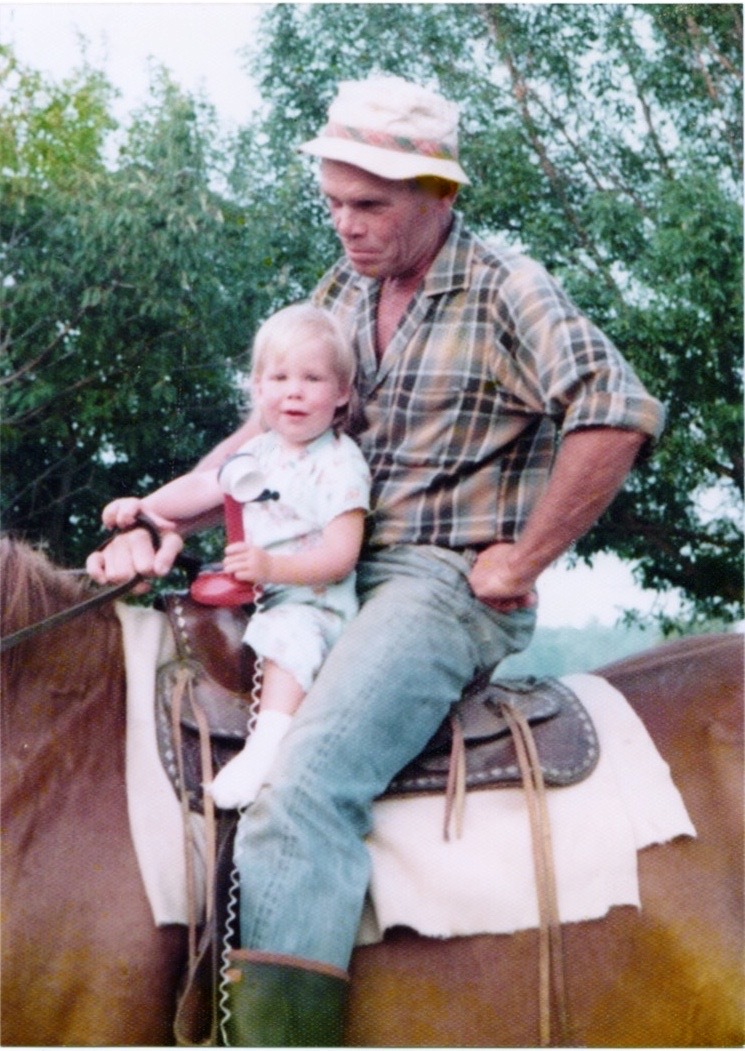
Papa was a French gentleman who moved to California at a young age. He smelled of peppermint, fresh cigarette smoke and Old Spice. He was quiet, kind and had an infectious laugh. Going places with him usually involved dressing up and spending time with older relatives. We would attend Catholic mass and then lunch at seafood restaurants eating avocados stuffed with shrimp. He was the perfect partner for taking it slow and I loved that he always seemed to delight in my company.
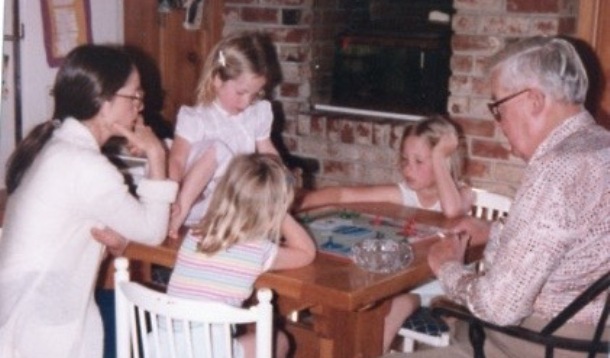
Despite their many differences both men shared similarities beneficial to the self-esteem of a little girl. Growing up in traditional households with sisters and mothers that they loved, chivalry was deeply ingrained.
To me this was not the type of chivalry that we feminists need to quash. It was simply a way of telling women how you felt about them in a time when words and physical affection didn’t come as easily. It was a way of showing love by caring for someone, being present and putting in the time. A perfect balance of, “May I hold your coat while you climb that tree?” Nothing feels better than being protected by someone who also believes in your strength.
Despite gruff, masculine exteriors, I think both of my grandfathers enjoyed receiving love as well. I can still remember how happy Grandpa was to have his sandwich made for him and I loved it when he would say, “Give your poor old Grandpa a hug.” I remember Papa’s face would light up when I would visit him in the hospital even though he was in pain. Even in his final days he still summoned up the strength to compliment me on my new self-inflicted crimped hairdo.
When I look at the person I chose to marry, it is no accident that he shares many of the characteristics I loved in both men.
My friend Meegan, one of the most hardworking people I know, credits her grandfather for her early success and confidence in business. “He took me with him everywhere as a little girl. I was allowed to be present at business meetings with much older men and women. Because of this I never questioned my right to, ‘have a place at the table’ and was always comfortable in the presence of those more senior than I was.”
Being an eternal student, I could not resist finding some academic research to support my theories on grandfathers. The stars aligned and I was lucky enough to have a chat with Dr. James S. Bates, Ph.D., Field Specialist of Family Wellness with Ohio State University Extension who has done a great deal of research on grandfathers. He and his wife Emily are also the parents of five children who love their two grandfathers very much. When asked what led him to study grandfathers, Dr. Bates replied, “I became interested in grandfather-hood research when I was writing a family history about my grandfather Bates, who died before I was born. At about the same time I was in graduate school studying family development and realized that there wasn’t a lot of published research on grandfathers and how they develop and maintain relationships with their grandchildren. So my personal interests and academic interests collided as I began a systematic study of grandfathers.”
Through his research, Dr. Bates found that most grandfathers want to have a meaningful relationship with their grandchildren and can be influential in their grandchild’s growth, development, personality traits, values, beliefs, family ideals and work ethic. “Grandfathers can also help their grandchildren become educated, get jobs, learn family and societal ‘rules’”. Dr. Bates also found that a grandfather can anchor and support the family during difficult times, act as a historian and teach cultural values.
Since Bates reports that grandfathers can provide a role model, confidante, friend and companion in fun it seems that parents should endeavor to facilitate these relationships.
Grandfathers can foster a relationship with their grandkids by being positive, upbeat, approachable and complimentary. Bates encourages grandfathers to get to know the grandchild as they grow by talking regularly, writing letters, emails, or texting regularly. He challenges grandparents to get tech savvy so that they can better stay in touch. Attending or participating in a grandchild’s school, faith, or extracurricular activities also helps to solidify a relationship.
Research also shows that being in involved in a grandchild’s life is associated with fewer depressive symptoms and increased feelings of happiness.
I couldn’t resist asking Dr. Bates why we find memories of our grandfathers to be so moving. “Perhaps we identify with him, maybe we look like him, we want to be like him, perhaps he was kind to us or beloved by others, perhaps he did heroic things that we admire.”
In the words of Bates, “Memories of grandfathers can be very impactful in how we live our lives.” I love that I see my experiences repeating in the relationships our children have with their grandfathers. When my Dad looks for adventure he usually turns to our youngest daughter because she is up for almost anything. It is the same with their Grampie. My friends’ fathers also provide the same. Our neighbour’s father Frank will take the girls to play tennis and although he treats them with gentleness I happily know that things are tougher on the court.
Why is it that some granddads are so wonderful? Maybe like all of us they soften with age and know what is truly important. It might be because they have seen it all before and know that it turns out okay. They are also slowing down and looking for fun again. What combination could be better for little legs and eyes full of wonder. When people ask me who enjoyed our family trip to Disney World the most, I always say, “Hands down, my Dad.”
I hope that when this article gets posted some of you will share stories and perhaps a few photos. Thank you Dr. Bates, and Happy Valentines Day everyone.
![]() RELATED: Plan the Perfect Valentine's Date - With Your Friends
RELATED: Plan the Perfect Valentine's Date - With Your Friends
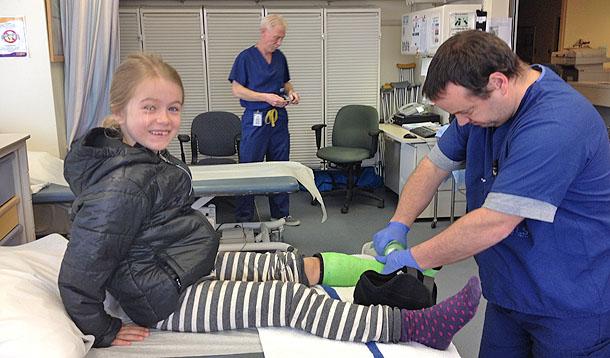
My husband and I are the children of physicians. This commonality broke the ice early in our relationship as we delighted each other with stories of neglected illnesses, injuries, and a childhood mostly devoid of empathy for pain!
My husband is also a physician and we now have three doctor’s children of our own. They are familiar with having to display a journal-worthy infection, or exposed bone before someone looks up from the paper. Treatment usually consists of a prescription to “walk it off.”
I had always assumed that physical pain flowed directly from logical or visual physical evidence. This all changed last March after our six-year-old daughter, Lola, sprained her ankle.
Following her accident, the Children’s Hospital of Eastern Ontario provided us with excellent care and explored every possibility. However, weeks passed and she would still weep when asked to put weight on her foot. A cast followed, more x-rays, a brace, and finally an MRI. The sight of Lola on crutches became our new normal. Together, we studied her, asked questions and worried.
After a few months of crutches with zero reduction in pain, Lola was diagnosed with Complex Regional Pain Syndrome, or CRPS, a type of neuropathic (nerve) pain. After the diagnosis, she began working with an incredible CHEO physiotherapist we nicknamed "Magical Vanessa."
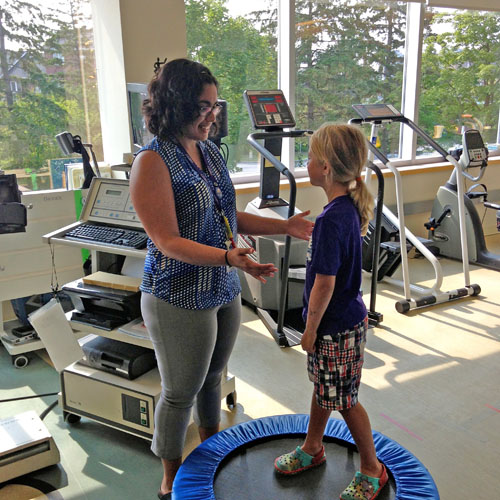
According to Dr. Fiona Campbell, from the Chronic Pain Program at The Hospital for Sick Children, "CRPS is well-recognized but rare. It can start after even a minor injury, which then triggers excessive activity of the nervous system causing pain and other unusual symptoms. The pain can be burning, tingling and throbbing and often very severe. Other symptoms include extreme sensitivity to light touch, intermittent swelling and changes in skin colour, sweating, and hair and nail growth."
Basically, Lola’s brain was receiving pain signals from her healed foot saying it was still injured, even though the sprain had already healed.
When a kid has CRPS, it's important to get a quick diagnosis and treatment at an interdisciplinary pain clinic like the one we attended CHEO. In our case, treatment for Lola involved physiotherapy, time, and a ton of “leg work.” Research shows that medications, psychological treatment, and physical therapy can all be helpful with CRPS, but it really is the physical therapy that is key in helping kids with CRPS.
Each day, we would take turns walking backwards around the block, leading Lola and holding her fingertips. She would usually cry throughout the exercise, making us look like terrible parents. Progress came when she could walk holding only one of our hands. Distraction helped and she loved hearing CNN stories read from my phone. We also used the Faces Pain Scale to help track Lola’s progress.
Our family’s experience with CRPS was emotional. Frequent suggestions from unsolicited observers that perhaps we weren't doing enough for Lola were hurtful. Insinuations that she was faking her pain for attention were the worst. I pushed back dread that my child was psychologically wounded enough to pull off such a feat. Thankfully, so many helpful and compassionate people were there for her too.

Spring came and she started to walk, then run, then climb and by the end of July it was mostly over.
Effective management of children’s pain is so important. It is now known that early exposure to pain has a negative impact on brain development, attention span and pain response later in life. Despite evidence on effective and safe ways to reduce pain associated with common procedures, many children still don’t receive these interventions but we, as parents, are now learning more about pediatric pain, thanks to It Doesn't Have to Hurt.
Parents now have access to evidence-based research about pain management that is explained in a way that is interesting, understandable, and usable. All of which would have been really helpful while Lola was going through her treatment. While reading through the website, I learned that pain is a subjective experience influenced by physical, psychological, and environmental factors. Pain is also divided into types:
I also learned that recent advances in imaging involve determining which areas of the brain light up when an individual experiences pain. Last year a study of pain imaging in babies confirmed that babies do indeed feel pain, and that they process it similarly to adults. Interesting stuff!
As parents, we confront growing pains, sports related injuries, pain associated with on a daily basis. There is so much to know and so little time to learn. After the experience with Lola's broken ankle, I was left wishing that I had been better armed with information about pain before the incident occurred. Our family feels so lucky to now have tools from the It Doesn't Have to Hurt at our disposal, I hope your family can benefit from them as well. Stay safe out there!

This is proudly sponsored by our friends at the Centre for Pediatric Pain Research.
www.itdoesnthavetohurt.ca